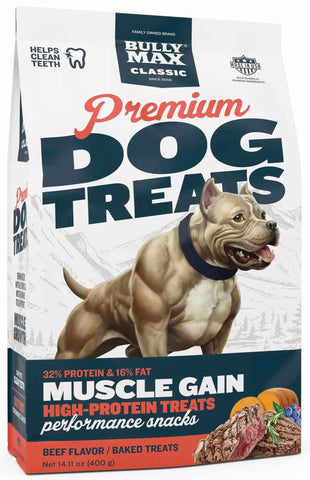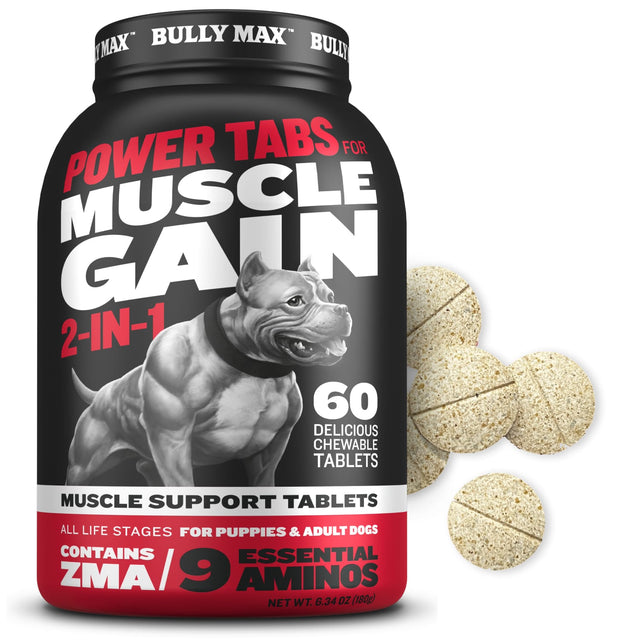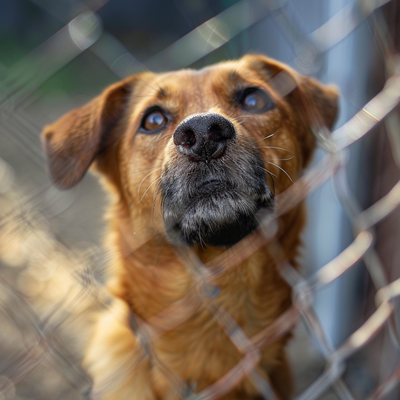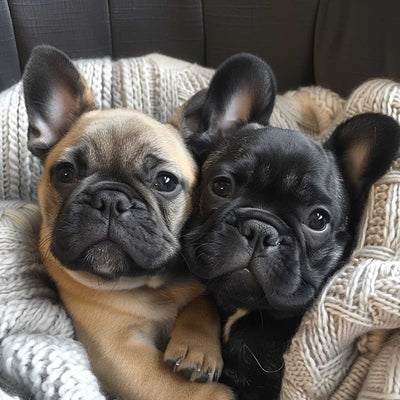How to Cut Your Dog's Nails: A Step-by-Step Guide
Nail trimming is an essential part of the grooming routine of dogs. It prevents various problems caused by overgrown nails. In fact, learning to cut your dog’s nails is a great way for you to bond and build your relationship. It also prevents the stress to your dog caused by visiting the grooming salon.
There are several things you need to know before starting to trim your dog’s nails. Knowing the anatomy of the dog’s nail, equipment and techniques to use are important in dog nail trimming. Here is a step-by-step guide that you can follow if you decide to cut your dog’s nails.
Understanding Dog Nails
This section will help you appreciate the importance of trimming your dog's nails. The anatomy and growth of the dog nail is not like that of humans. There are also several issues that could arise from overgrown dog nails that you should be aware of.
Dog Toenail Anatomy
Dogs have two forelimbs and two hindlimbs, wherein each limb has a set of toes and toenails. In general, a forelimb has a set of five nails, including the dewclaws. Dewclaws are the toes and nails found on the inner and upper parts of the forelimbs. The hindlimb usually does not have a dewclaw. It only has a set of four toenails.

The number of toes and toenails per limb may vary in some dogs. In breeds such as the American Pitbull, their hindlimb may have dewclaws. Another example is the Norwegian Lundehund. This breed is reported to have six toes and six nails per limb. This condition of having extra toes is called polydactyly.
The illustration above shows the anatomy of the dog nail. A dog's toenail is positioned at the tip of the last bone of the toe. It is also attached to the nail bed of the toe pad. The toenail itself is generally composed of the hard layer and the quick.
The quick is located at the center of the dog's nail. This is where you can find the nail's nerve and blood supply. As the dog nail grows, the quick tends to grow with it. In trimming a dog's nail, it is essential to be able to identify the quick. If it is accidentally cut, it would result in pain and bleeding.
The color of the dog's nails also varies. In white-colored nails, the quick is easily spotted. Identifying the quick is more challenging in dark-colored nails. The quick is partially visible in brown nails and invisible in black nails.
How Fast Do Dog Nails Grow?
The duration of the growth of dog nails varies. It depends on factors such as the age and size of the dog, genetics, diet, and environmental factors. Smaller and younger dogs have faster nail growth than larger and older dogs. Typically, it takes two to three weeks for the outer nail to cover the quick.
Overgrown Dog Nails Problems
There are several problems that could arise from overgrown nails. All these problems cause great pain to your dogs. Some of these may also need trips to the veterinarian. The list below is some of the most common problems from overgrown nails.
Pain
One of the most apparent problems with overgrown nails in dogs is pain. When dog nails are neglected, they grow past the paw pad. These nails put pressure on the paws as the dog tries to walk. As a result, dogs with overgrown nails may be reluctant to walk and exercise. Thus, pain from overgrown nails affects the quality of life of dogs.

Mobility Issues
Dogs walking with overgrown nails may have mobility problems. These include limping, slipping and sliding, hobbling, and losing balance. All these problems predispose dogs to accidents. This problem also disrupts their natural behavior.

Nail Trauma
Long and overgrown nails are prone to breakage. They are at risk of getting caught in furniture, carpets, and toys. When an overgrown nail breaks, there is a high chance that the quick is also affected. This condition is painful and bloody for dogs. In worse situations, the overgrown nail may completely break off from the paw pad. This condition is known as nail avulsion. Bleeding may be harder to control in this situation.


Trauma to Paw Pads
As the nail grows past the paw pad, it tends to curl around the paw. If neglected, the nail pierces through the pad, creating a puncture wound. Sometimes, the overgrown nail may damage the tendons in the paw. This is extremely painful for dogs. It also creates an entry point for germs, which may result in an infection. This is commonly encountered in the dewclaws due to their location.

Infection
The nail or paw pad trauma can lead to an infection. In nail trauma, the quick is exposed, which can harbor pathogens from the ground. This happens especially if the owner is unsuspecting. Nail avulsion often results in a larger wound, which makes infection more likely. The puncture wound in pierced paw pads creates an environment for abscess formation. The behavior of affected dogs also contributes to the problem. Dogs tend to lick the traumatic areas and introduce bacteria from their saliva.


Orthopedic Problems
If dog nails are left overgrown for an extended period of time, a range of orthopedic problems may occur. The conditions may be temporary or permanent depending on many factors. Most of these problems are a result of the repeated and/or chronic pressure put by long nails on the paws. These conditions include:

Osteoarthritis
A chronic painful condition where the tissues in the joints degenerate
Splayed feet
Separation of the toes of the paws may lead to balance issues and broken bones
Postural problem
Seen as back arching; indicative of spinal pain
Preparation for Trimming Dog Nails
Trimming your dog's nails for the first time may be a challenge. You need to have the equipment, a cooperative dog, and confidence. Here are some tips to help you along the way.
Equipment
Before trimming your dog's nails, it is important to prepare everything you need. Here is a list of things you need to trim your dog's nails.
Dog Nail clippers

Styptic powder

Nail file or sandpaper

Dog treats

Desensitization
While some dogs won't have a problem with nail trimming, others will. If your dog is uncomfortable with nail trimming, desensitizing it is crucial. It is also helpful to bribe your dog with treats along the process. Here are the steps you can follow to desensitize your dog.
-
Hold your dog's paw. You may gradually lift it until he no longer minds it.
-
Let your dog sniff the nail clipper and the nail file.
-
Expose your dog to the sound of the nail clipper.
-
File your dog's nails. This will get him used to handling his nails.
-
Cut one or a couple of nails daily, depending on your dog's comfort.
Identifying the Quick
You have already learned about the quick. Now, the question is how to spot it. This is relatively easy for dogs with light-colored nails. By looking closely at the nail, you will see the pink region at the center. This is the quick, and you should avoid it when trimming the nail. The quick is more challenging to spot in dark-colored nails.
How to Cut Your Dog's Nails?
If you have all the things you need, then it's time to trim your dog's nails. Make sure to do the nail trimming in a well-lit area without distractions for your dog. Here is a step-by-step guide to cutting your dog's nails.
Lift the Paw
There are several ways to do this depending on your dog’s preference. You may let your dog sit across you or beside you. Use your non-lifting hand to hold the nail clipper.
Other dogs may be more comfortable in a raised area. In smaller dogs, you may have someone hold your dog. Some dogs are calmer when carried.

Isolate the Nail to Cut
Once you have secured your dog's paw, it is time to isolate the nail to cut. Begin by deciding which toe to start with. By gently applying pressure, the nail of the toe should extend. Make sure that there is no fur covering the nail.

Cut the Nail
By this time, you should have located the quick. Avoid the quick and cut at a 45° angle. Remember not to cut straight across. Cut off little by little in darker nails until the tip of the quick is visible. Make sure to cut all the nails, including the dewclaws.

File the Nails
Finally, smoothen the edges of the nails by filing them. Do a repeated back-and-forth motion on the tip of the nail using a nail file or sandpaper. Do not overdo this, as it may cause some bleeding.

Reward with Treats
Do not forget to reward your dog for good behavior. This is important in establishing a positive experience with nail trimming. Bully Max treats are formulated to have high protein and palatability. Bully Max Chicken or Beef flavoured dog treats could be the perfect choice for your dog!


Most Common Nail Trimming Problems
It is not uncommon to encounter some problems with dog nail trimming. Here are some troubleshooting tips when trimming your dog's nails.
I cut the quick.
If the nail is bleeding after you cut it, you have to cut the quick. Use generous amounts of styptic powder and cover the tip of the bleeding nail. If you don't have this, use flour or cornstarch instead. The bleeding should stop immediately or within five minutes. Bring your dog to the veterinarian if the bleeding won't stop.
My dog is uncooperative.
Do not force your dog to have his nails trimmed if he is uncooperative. Do not try to restrain your dog. Follow the steps on how to desensitize your dog with nail trimming. This may take weeks or months for some. If your dog needs his nails trimmed, brim him to a professional grooming salon.
My dog has black nails.
In dark-colored nails, the quick is not outright visible. You may try to shine a flashlight through the nail to spot the quick. In case this doesn’t work, cutting off the nail sliver by sliver is the way to go. The inner nail will look chalky along the way. You need to stop once you see a black dot in the middle of the white area. This is the tip of the quick of the nail.
How Often Should You Trim Your Dog's Nails?
There are several factors that determine the frequency of nail trimming in dogs. Some factors include dog age, size, environment, and activity. As an example, smaller and younger dogs need nail trimming more frequently. This is around at least every two weeks. The same is applied to indoor dogs with minimal activity outside. Dogs who spend time walking and running outdoors may only need to have their nails trimmed once a month.
Some signs show your dog's nails may be too long. If your dog's nails are touching the ground while standing, his nails should be trimmed. Another sign is hearing your dog's nails clacking on the ground.
As recommended, it is important to establish a regular nail trimming schedule. Here are some tips you can follow.
- Know how often you will need to clip your dog's nails. For starters, you can trim every two weeks and work your way from there.
- Set the trimming schedule, and don't miss it. You can include it in your phone's calendar.
- Build a routine with your dog. Always remember to reward your dog with treats.
Alternative to Trimming Dog Nails
You may try a dog nail grinder if a nail clipper doesn't work for you or your dog. A nail grinder is an electronic device that files down the toenail. It is a fast-rotating tool with a sanding head.
Tips on how to use a nail grinder.
- Ensure there is no hair around the nail. Trim the hair around the paw if necessary.
- Secure the paw and start one nail at a time. Make sure the dog is staying still.
- Place the nail grinder gently at the nail tip. Focus on grinding the nail tip by doing an up-and-down motion.
- Watch out for the quick. Take breaks to check your distance from the quick.
- Polish the nail tip by doing a circular motion using the nail grinder.
Grooming your dog takes a lot of patience. If you are a first-time dog owner, you will definitely need tips.
Tips to help you groom your dog.
- Trim nails after a bath. A bath will soften your dog's nails, making them easier to clip.
- Brush before you bathe your dog. A wet coat is more difficult to brush.
- Use cornstarch as a detangler. Pouring cornstarch into tangles makes brushing easier.
- Use coconut oil as a moisturizer. Dab this on dry areas such as the paw pads.
- Offer carrots as a plaque remover. Give boiled and frozen carrots to dogs as an alternative to brushing their teeth.
Conclusion
Regular dog nail trimming is important in keeping your dogs healthy and comfortable. It keeps them active and free from chronic pain issues. With enough practice and treats, you can easily trim nails at home.
Always stick to your regular nail trimming schedule. This prevents nail trimming lapses, which may lead to overgrown quicks and nails. Remember, an overgrown quick is harder to manage at home.
Do you trim your dog's nails at home? Share with us your experience by leaving a comment below.





![How to Fatten Up a Dog? [Dog Trainer Explains]](http://shop.bullymax.com/cdn/shop/articles/how-to-fatten-up-a-dog.jpg?v=1714654612&width=400)
![How to Train a Search and Rescue Dog [Dog Trainer Explains]](http://shop.bullymax.com/cdn/shop/articles/Search_and_Rescue_Dogs_in_dog_training_court.jpg?v=1713867590&width=400)

